All of the shine, with none of the wax
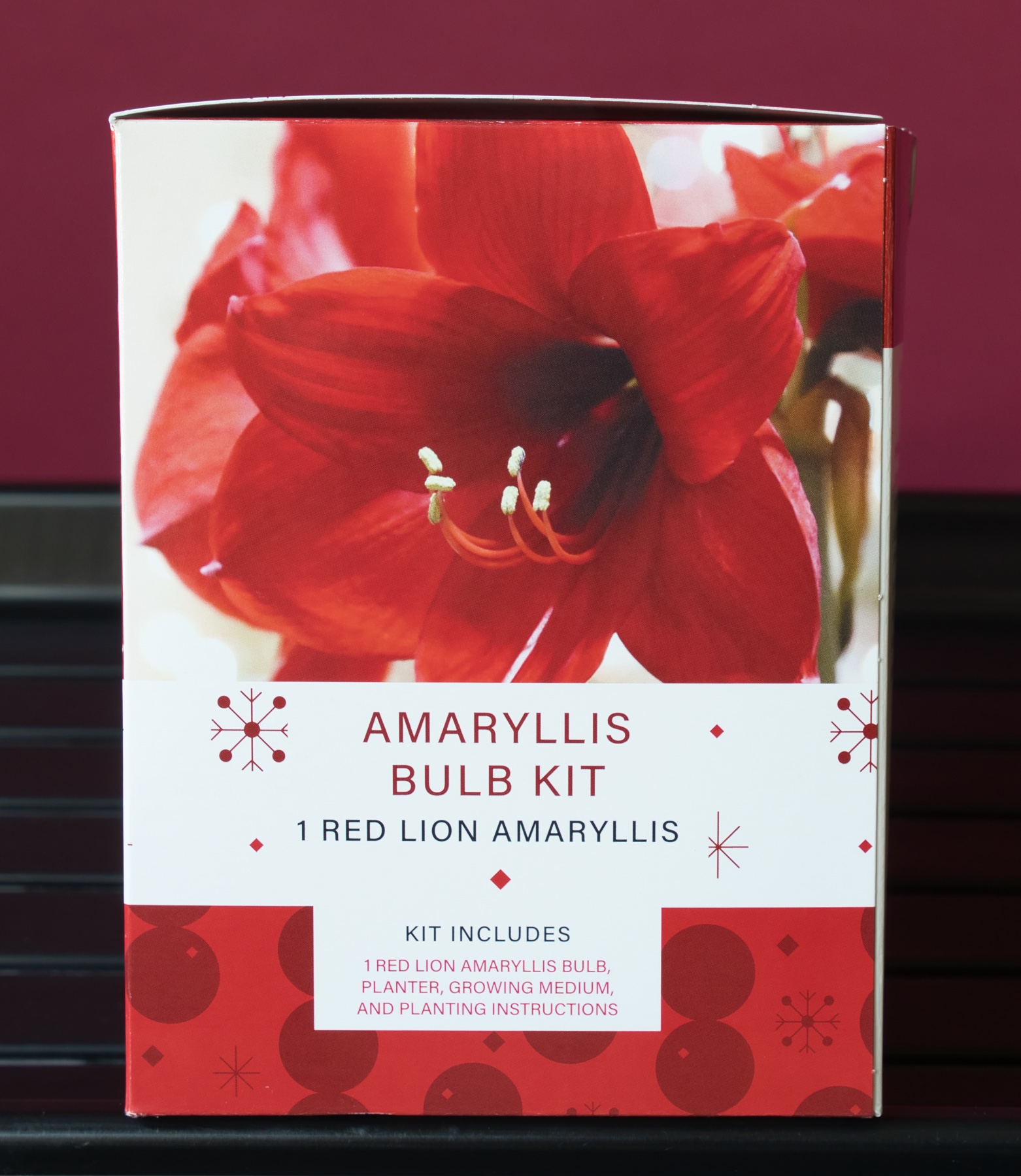
With a worldwide pandemic in full swing, and shopping forays limited to fewer and mostly essential trips, the thought of any sort of Box Kit Bonanza initially seemed dim for 2020. Then again, both grocers and hardware stores where these kits are often found are in that essential category, and the need for cheer is greater than ever. So here we are, once again celebrating the most certain way to get an inexpensive amaryllis that will hopefully be well-performing and correct to ID. Since the subject here is ‘Red Lion’, expecatations are better than usual on at least that last point.
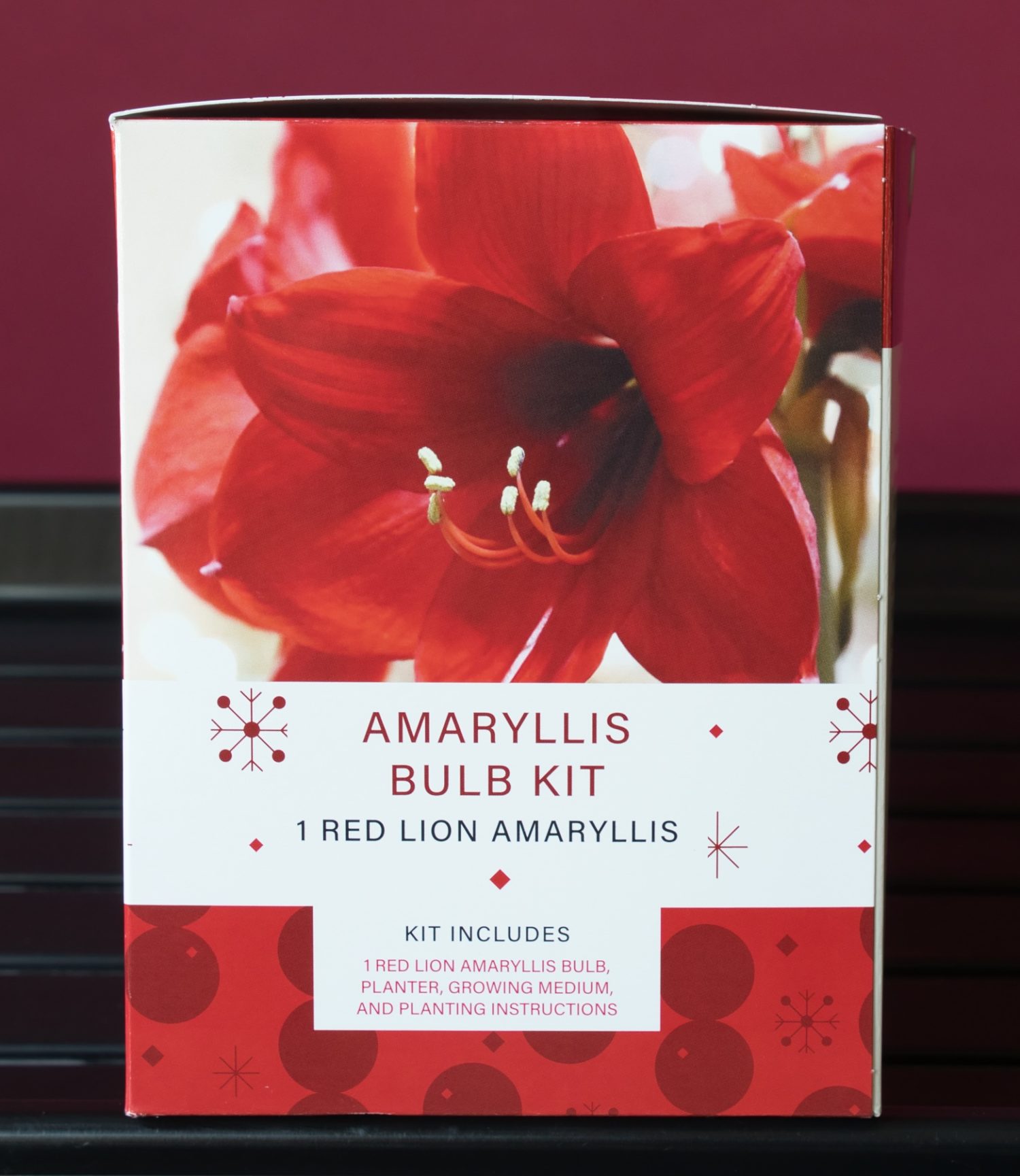
Each year it seems, more ultra dark red amaryllis cultivars are launched, spurred by the runaway popularity of ‘Royal Velvet’, still one of the most impressive in its class. It has been noted that these dark colored forms were available decades ago but failed to achieve lasting market dominance. In the dark days of our (Northern Hemisphere) winter holidays, dark colors don’t necessarily bring the needed dose of bright cheer to the dim rooms of our homes in winter. That’s where the beaming face of a bright, scarlet red is the seasonal tonic we seek, and hence the longstanding popularity of ‘Red Lion’. Color and beauty aside, the reasons for this stalwart clone to be used even as other excellent red Hippeastrum hybrids have come along are predictability and reliability. Let’s dig in!
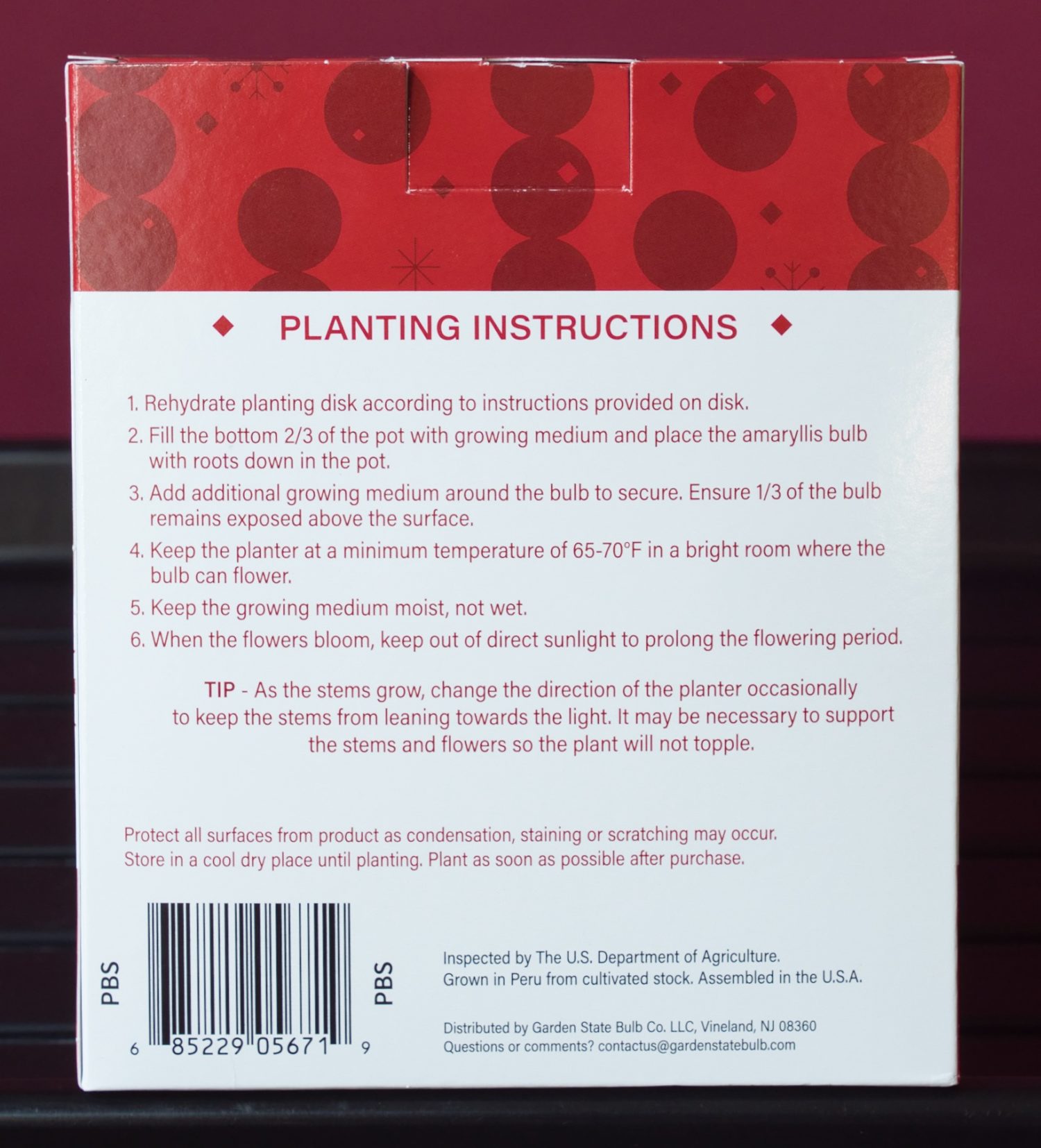
First, the stats. The kit was purchased from my local Home Depot for US $7.98 on 30 October. The contents are assembled here in the USA, but the contents are from different places. The bulb was grown in Peru, the coconut coir is from Sri Lanka, the pot and box itself are from the United States. When you consider that the least expensive waxed bulbs are about twice the cost, will we get half the show from this humble kit? Emaryllis thinks not, but the proof’s in the pudding.
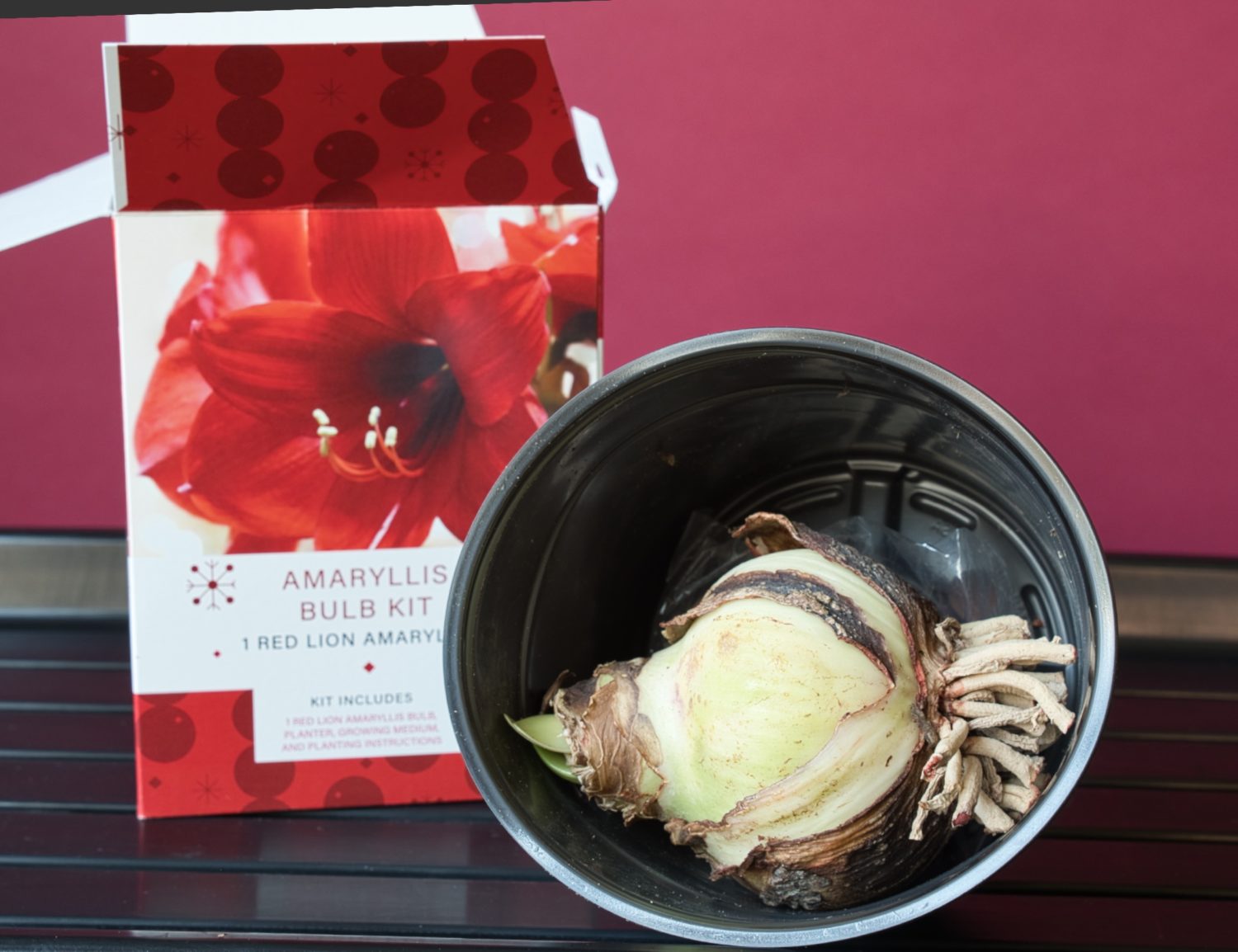
Peru has become increasingly important for amaryllis production, seemingly eclipsing neighboring Brazil of late. As expected, a bulb grown in South America is ready to go, and we can see that there is growth stirring from our subject. It’s a good that we are potting this fellow on just one day after purchase, though there is no bent-scape emergency going on here, so storing for a week or two would have been okay. Still, it wants out!
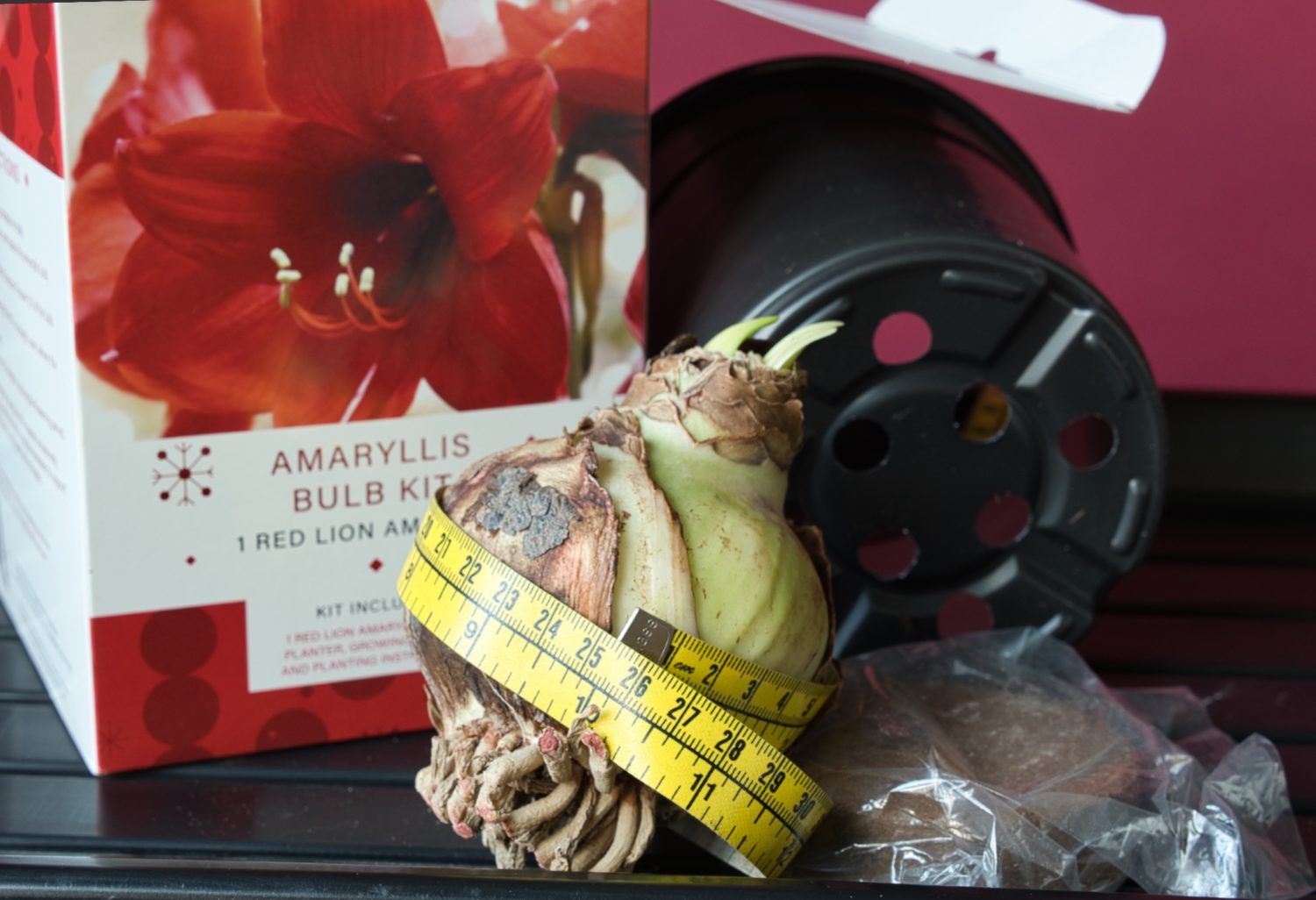
The roots may have been chopped, but they are reasonably fleshy. They will have to form branch roots quickly if they are to provide the moisture needed for truly excellent performance. Is this the little box that could?
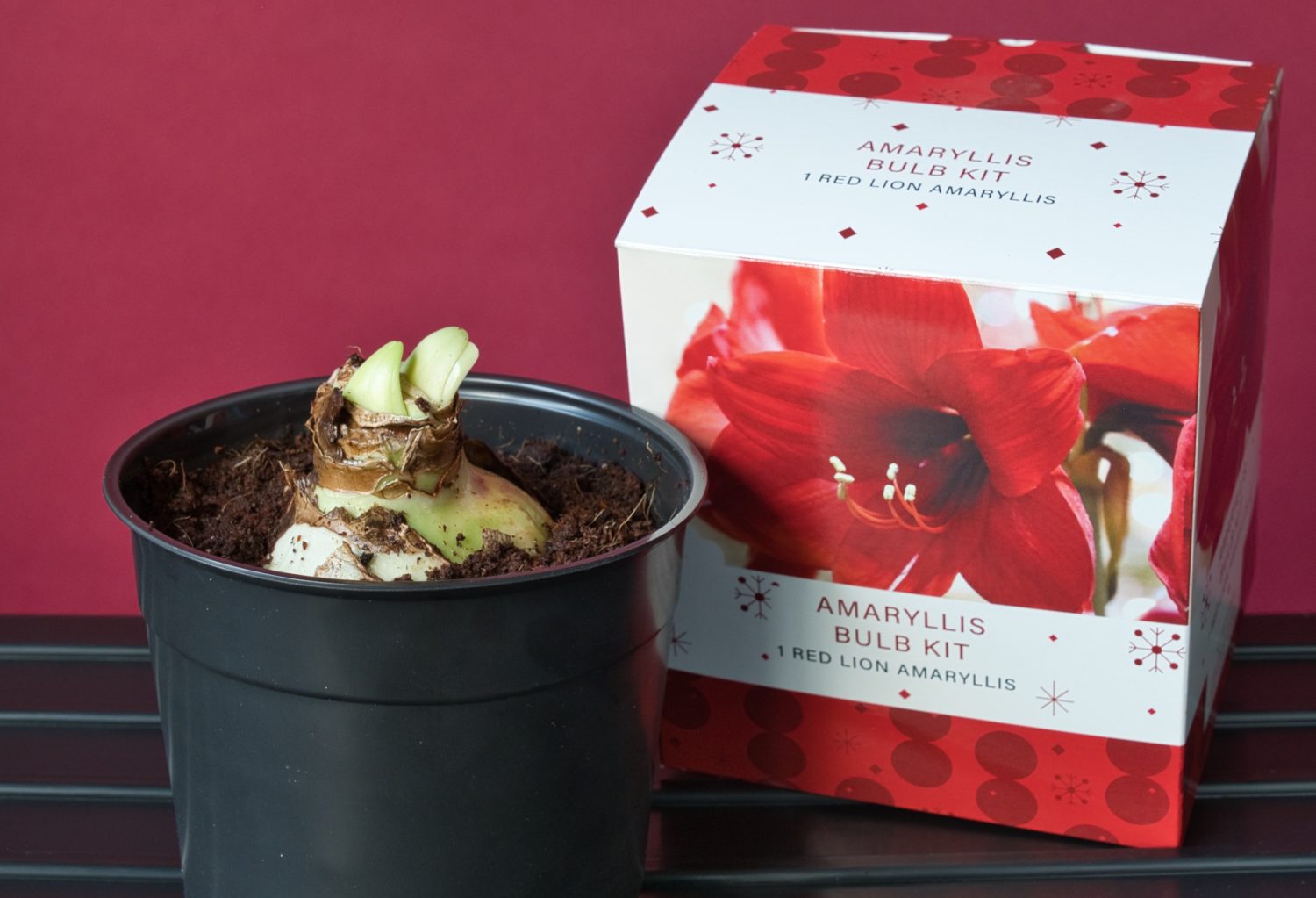
Emaryllis generally starts all newly potted bulbs very close under fluorescent lights (one of the reasons for the trip to Home Depot) to keep growth from stretching and requiring staking. The intensity level and hours on (about 15 hours) are better than what they will face in a naturally lit window once they are 12″/30cm or so, and too tall to stay under the lights.
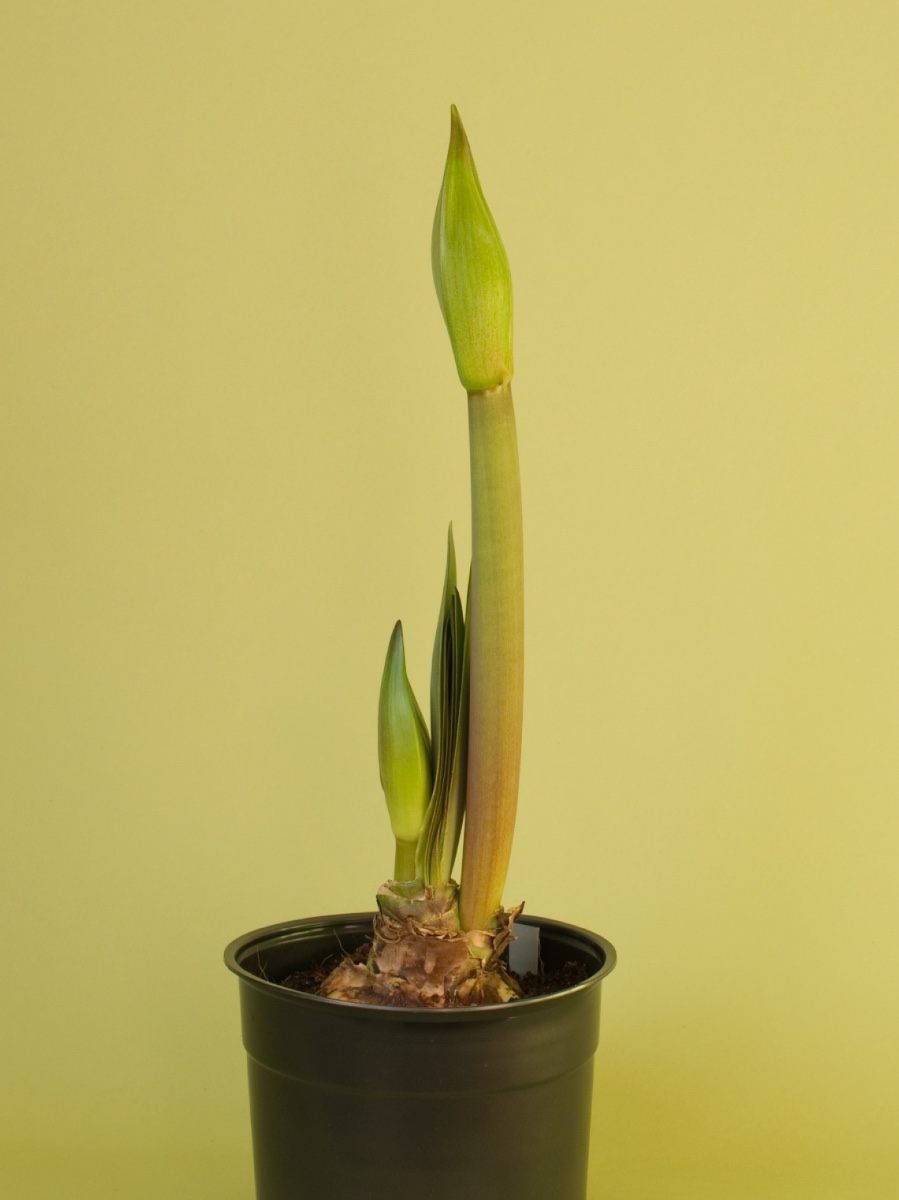
In just two and a half weeks, the bulb shows great promise. The scapes are sturdy, but now have to deal with less light hours, and hit or miss sunshine depending on our weather.
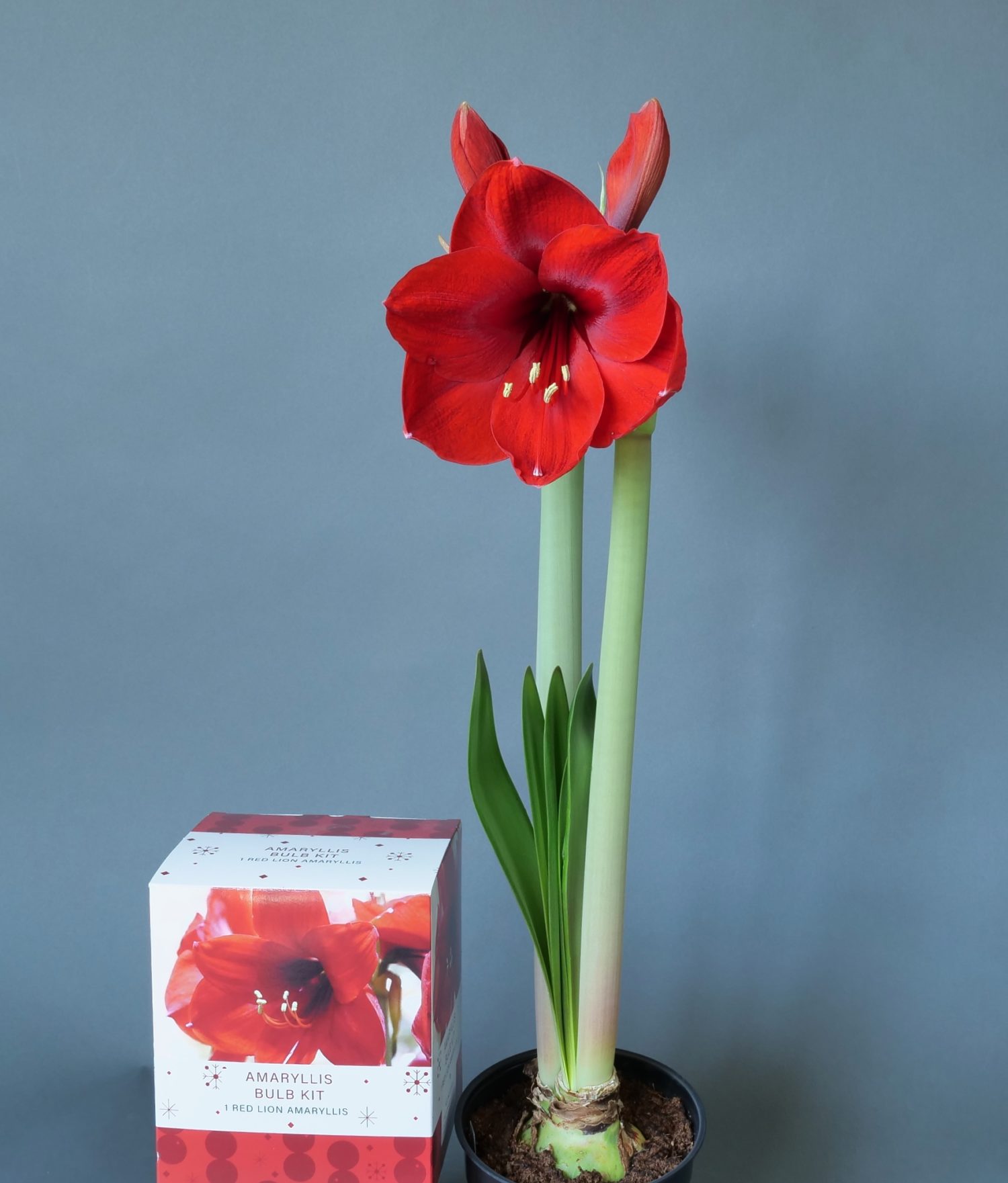
Not only is our subject quick, it is sturdy and yes, true to type! Our first scape is 15″/38cm tall and is making the requisite four flowers. This is ‘Red Lion’ doing what it does best. The shade of red is undeniably a beacon of intensity, and its luminous shade enlivens the room, even when the lights are low. Just what we needed.
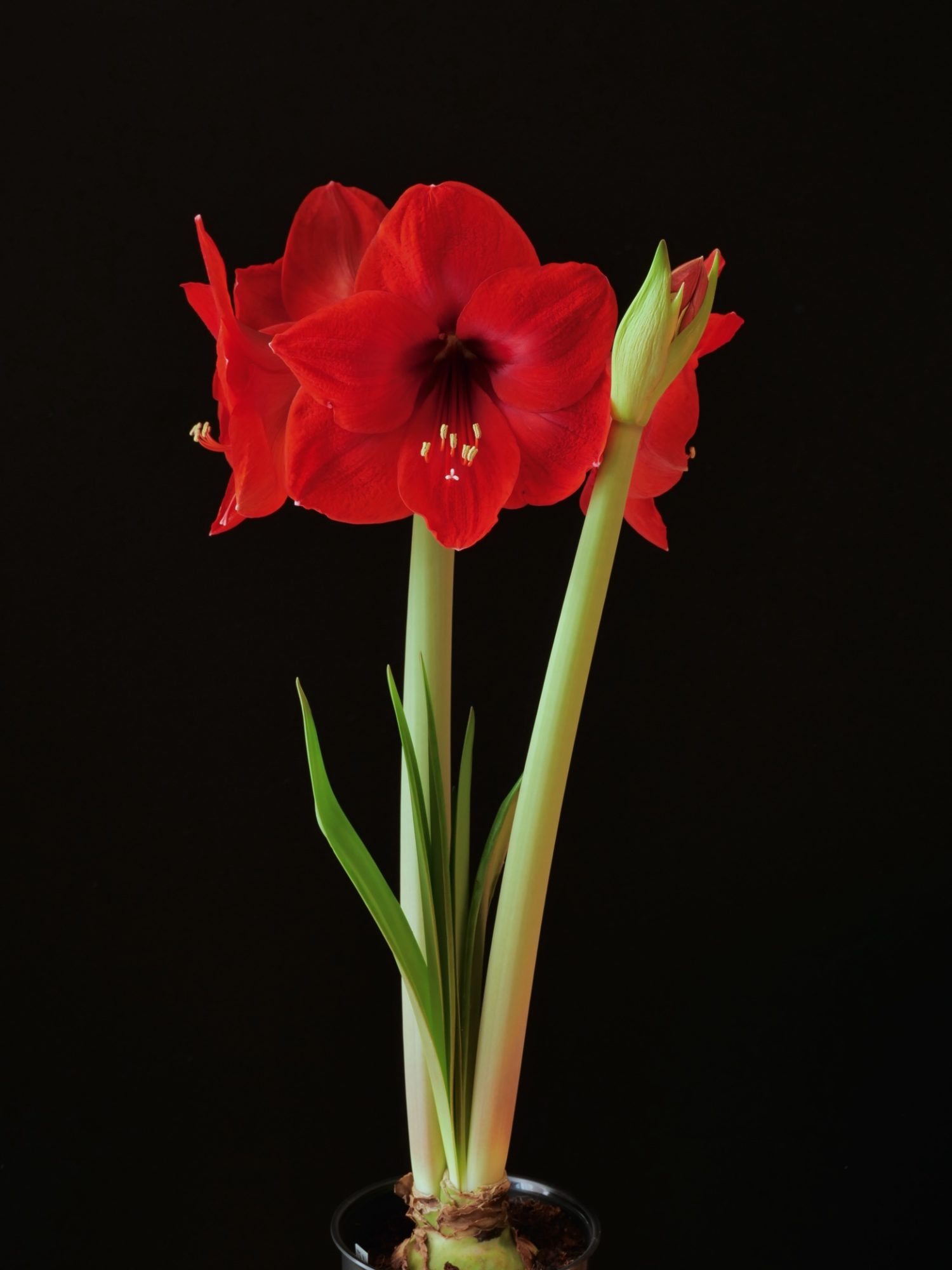
No one could argue that this inexpensive kit is making a performance that renders it a terrific bargain.
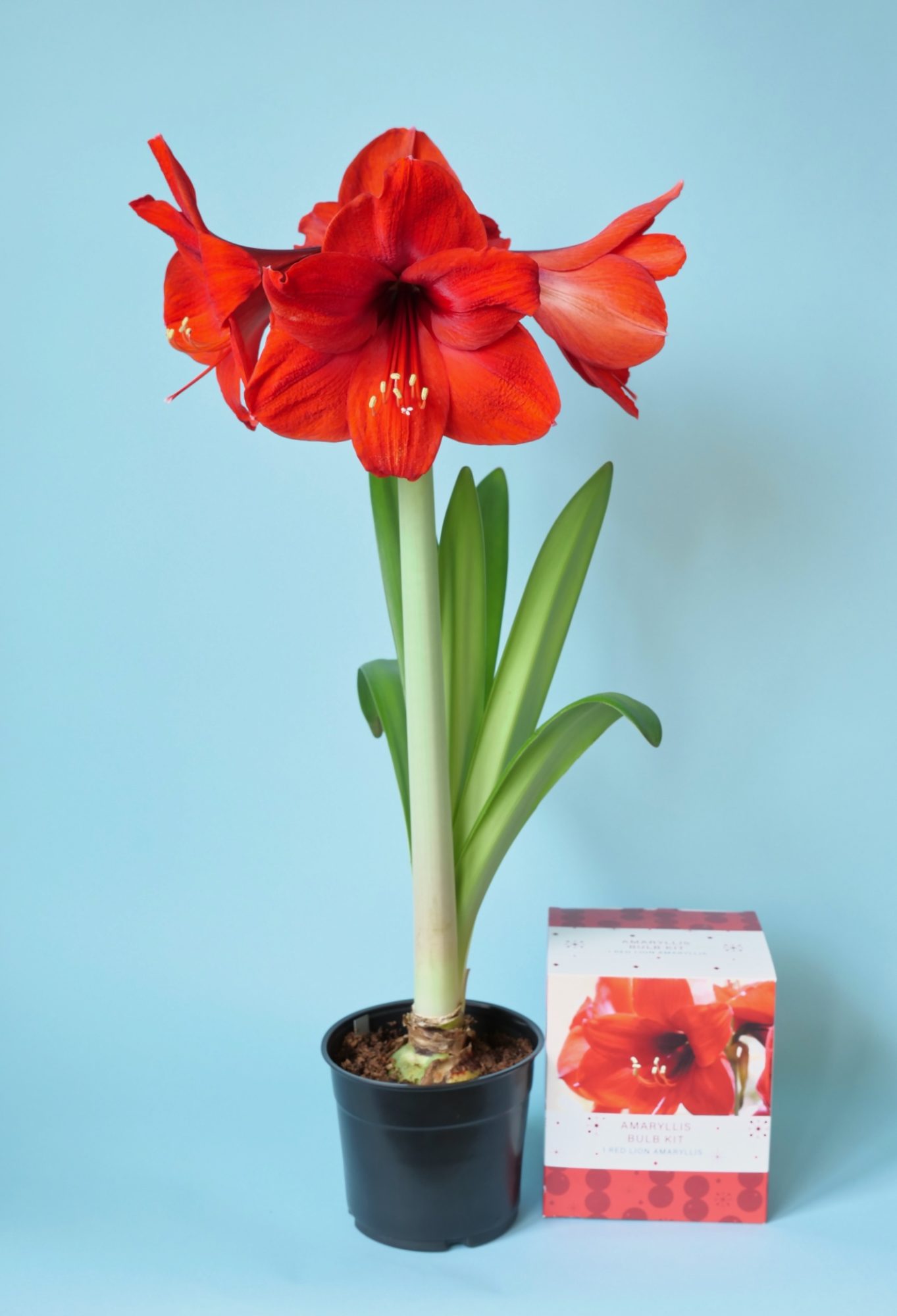
This kit did indeed do all that we could ask from it, and perhaps more. While many of these might have toppled grown in unfavorable lighting (especially considering the pot and media are so lightweight) many would simply drop this into a heavier and more festive cachepot. ‘Red Lion’ really shows its mettle here, producing valiantly from a relatively small bulb, with little fuss. While the waxed bulb phenomenon seems poised to steal much of the traditional box kit’s thunder, this example reveals why true plant lovers will continue to find them far more rewarding. For one, the performance is leagues better than any seen from a waxed bulb. Can they produce a lush cluster of foliage to go with their paltry, pollen-stained flowers? By examing and handling the bulb, the roots, and by hydrating the media and actually planting the amaryllis, the recipient takes part in the growing and blooming process of their own plant. The reward is thus more personal, and all the more fulfilling. Emaryllis has said this before, but long live the box kit!

There is something very reassuring about taking time out from the current craziness our world is in to read an Emaryllis kit report. Thank you for brightening my day!
So nice to hear that! I have seen the visitation numbers going up lately, so hopefully others are also enjoying a pleasant distraction:-) Thanks for the comment!